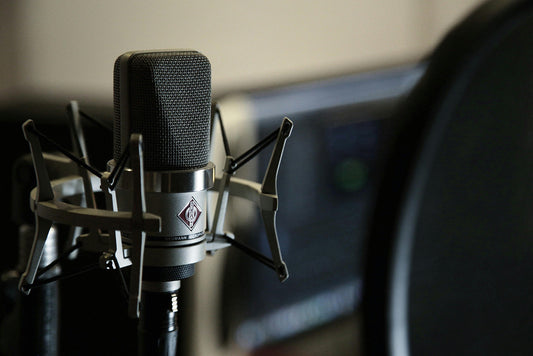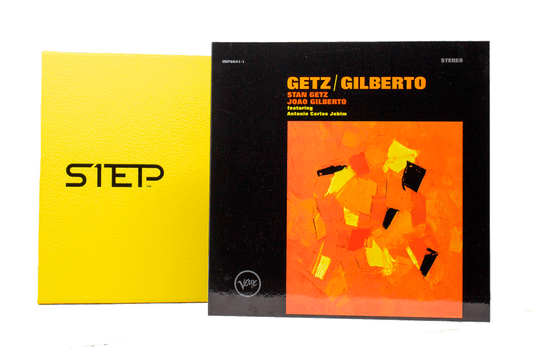Our first installment on Empire mentioned the beginnings of the company in phono cartridges and tonearms, soon followed by turntables. The jump from record-playback gear to loudspeakers is not one that many audio companies have made—but that is indeed what Empire did. And how did they get from A to B?
One clue comes from a statement by Empire President Herb Horowitz quoted in the “High Fidelity Newsfronts” column in the May, 1963 issue of High Fidelity: “The more they publicize stereo [consoles], the more audio-oriented the public will become—and the more components they will buy.” The column continues, “Horowitz backs up his optimism with reports of high component sales, the opening of new component shops, and the fact that major department stores have added component departments to their merchandising operations. All in all, Horowitz feels that ‘1963 may well prove to be the biggest boom year in our industry’s history.'”
Given such an attitude from a company’s President, you’d expect that company to expand its operations—and they did. But meanwhile, Stereophile ran its one and only review of an Empire product, the 880p cartridge. It was a rave, sorta, in J. Gordon Holt‘s patented way that often made you feel, “yes, it was good, but it should’ve been better.”
Moving on from that, by the middle of 1964, ads began appearing for the Empire Grenadier, the first of the columnar end-table speakers that were an Empire trademark for many years. Initially there were two models which were similar, but not identical: the Grenadier 8000 was of simple tubular structure, with a 12″ down-firing woofer mounted at the bottom, radiating through grillework around the entire cylinder; midrange and tweeter drivers were mounted on a die-cast acoustic lens assembly on the column’s side, near the top. The top was polyester laminate, safe for cocktails as an end table. The Royal Grenadier 9000 was bigger and better, with a 15″ woofer mounted at the bottom of an “exclusive non-resonant rigidized heptagonal sonic column” with “hand-rubbed satin walnut finish” and a top of “imported Italian Periata marble.”
The full-line 1964 product brochure can be seen here. In addition to the Royal Grenadier 9000 and Grenadier 8000, there was a 3-way bookshelf speaker called the Imperial Grenadier 8200, which seemed to have used the same drivers as the 8000. The only other place I’ve seen this speaker is in the second catalog pic below–never in an Empire ad or review.
Also shown were the Troubador 398 record player, which was mentioned in Part 1: 208 table, 980 arm, 880p cartridge, and “handsome walnut base”. Confusingly, the package was also available without the base as the Troubador 388.
But wait! There’s more! The company definitely had a talent for creating a bewildering array of very similar products with nomenclature seemingly designed by an ex-Army supply clerk. The 1964 catalog also lists the Troubador 488 record player, with a smaller chassis than the 398/208/whatever, and primarily designed to drop into a console. The 488 package consisted of the 408 table, 980 arm and 880p cartridge, mounted on a walnut mounting board. The 408 table introduced the suspension system that would be characteristic of all subsequent Empire tables—and just to further muddy the waters, the package was available with a walnut base as the Troubador 498. You could go blind reading the fine print on their model listings.
If you’re determined to sort through all the variant turntable models made and sold by Empire, this guide will help you to do just that.

More speaker models appeared: the 7000 appeared identical to the 8000; the 5000 was a 2-way system; then there were several lower-priced models that appeared to have been short-lived: the “Cavalier Kitten” (???) 2000 and 3000 were more like footstools than end tables. The 2000 was a 2-way system; the 3000, a 3-way. Other than these catalog pictures, I’ve seen no mentions or reviews of the “Kittens” in any period hi-fi mag. No sense of whimsy, I guess.
The 8200 mentioned above as seen in the 1964 full-line brochure was also seen in the Lafayette catalog of that era, along with the slightly fancier 8400:
 The February, 1966, “High Fidelity Newsfronts” column in High Fidelity refers to an in-wall or on-wall 3-way system which used the drivers and crossover from the Grenadier 8000 mounted on a walnut baffle board. The ubiquitous Herb Horowitz is quoted as saying the unnamed custom speaker would sell for $185. I haven’t found mention of this model anywhere else, and can’t verify that it was ever produced.
The February, 1966, “High Fidelity Newsfronts” column in High Fidelity refers to an in-wall or on-wall 3-way system which used the drivers and crossover from the Grenadier 8000 mounted on a walnut baffle board. The ubiquitous Herb Horowitz is quoted as saying the unnamed custom speaker would sell for $185. I haven’t found mention of this model anywhere else, and can’t verify that it was ever produced.
 Horowitz, circa '67.
Horowitz, circa '67.So, who was this guy Horowitz? One industry bio mentioned, “Herb has been in the industry since 1942 when he was a junior engineer with Pilot [Radio].” The next link in the chain was in a blurb quoted in Part 1: “Mr. Horowitz spent many years as chief engineer of Electro-Sonic Laboratories and chief of audio products for CBS/Columbia.” Another bio states that he went to CBS in 1954, ESL in 1956, and helped found Empire—then still Audio Empire, a division of Dyna-Empire—in 1958. When contemporary sources don’t agree, it’s difficult to sort things out sixty years or more later. At any rate, Herb was a busy guy, prominent in the biz, even after Empire—but we’ll get into that in the next issue.
All that aside, the mid- to late- ’60s appeared to be a good time for Empire and Horowitz. He once again pops up in High Fidelity, this time in the September, 1969 “News & Views” column: “Recently we took an excursion to Garden City Long Island to have a look at the new Empire Scientific plant and have a talk with Empire president Herb Horowitz. Herb always seems to have something interesting to say, and he is, moreover, one of those manufacturers who really cares about high fidelity.
“His sense of personal involvement was never more evident than it was as he showed us the cabinet-making operation. Empire has been in its new building about a year, bringing cabinetry, raw speaker manufacture, assembly, and other hi-fi operations under one roof for the first time. As we walked, Herb would pick up a milled panel or a strip of walnut and reminisce over the pitfalls the operation had climbed out of on the road from outside suppliers to full production in its own shop, a look of amused triumph twinkling in his eye.
“Naturally, we discussed with him the subject of turntables….Herb confirmed that there may be new life in the manuals market. He cited a sharp increase in Empire’s sales of manual turntables and attributed the turnabout to the quality of the modern $75 cartridge….with even the fanciest changers, he believes, you can’t get out of these new cartridges all they have to offer.”
I have no numbers on how big Empire’s speaker business was, but judging by their continued presence in ads and reviews for many years, it must have been reasonably sizeable. Not AR-big, but then, what besides AR was?
Oddly, I never heard any Empire speakers when they were new—and through the decades I’ve heard dozens if not hundreds of vintage speakers, but I’ve never even seen a pair of Empire’s once-popular end table speakers, much less heard them. I wonder if they’ve all been consigned to landfills or the backrooms of church thrift stores, as tastes have drifted away from marble-topped tables…
I’ve asked a number of veteran hi-fi folk about Empire speakers; most respond with a shrug or an unenthusiastic “meh”. Copper contributor—and oh yeah, renowned speaker designer— Ken Kantor surprised me by saying, “the first time I heard those things [Empire Grenadiers], I thought it was the greatest thing I’d ever heard…’course, I don’t really remember what I was used to. Probably just old consoles….”
But people still remember the turntables. In the next issue of Copper, Part 3 of the Empire story will get into the later, more-famous turntables…and what ultimately became of the company.


